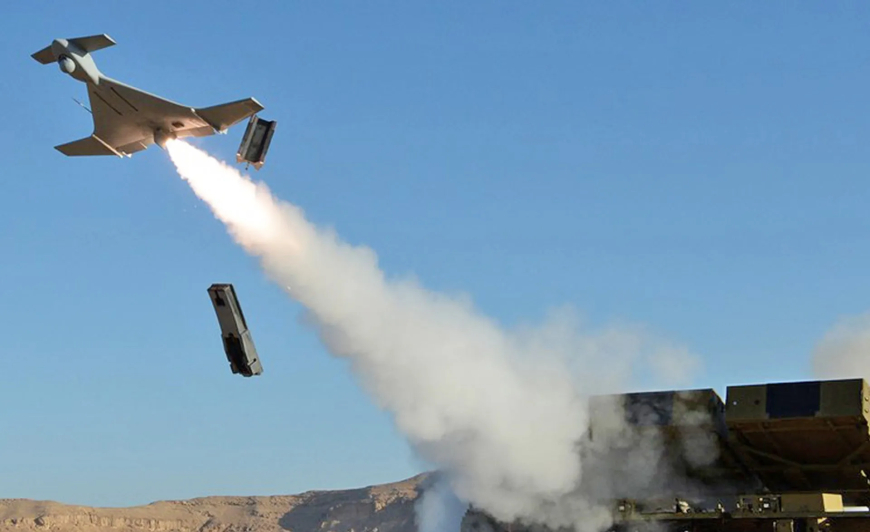Skies of Tension: How the India-Pakistan Drone Conflict Is Fueling a New Arms Race
The India-Pakistan drone conflict is intensifying, leading to a dangerous arms race in South Asia. Learn how UAVs, AI, and foreign alliances are shaping this modern warfare.

The skies over South Asia are no longer quiet. The escalating drone conflict between India and Pakistan marks a new chapter in regional military dynamics. As both nations invest heavily in unmanned aerial vehicles (UAVs) and counter-drone technology, an alarming arms race is unfolding. This shift not only threatens border security but also raises global concerns over unchecked militarization in a nuclear-armed region.
Rising Tensions: A Timeline of Drone Incursions
Over the past few years, India has recorded hundreds of drone incursions along its western border, particularly in Punjab and Jammu & Kashmir. According to The Hindu, more than 200 Pakistani drones were detected crossing into Indian airspace in 2023 alone.
These drones are not merely for reconnaissance. Authorities have frequently intercepted payloads of weapons, explosives, and narcotics, indicating a growing use of UAVs for hybrid warfare. The Indian Border Security Force (BSF) and other intelligence agencies have stepped up surveillance and deployed anti-drone systems, but the pattern suggests a more sophisticated threat strategy from across the border.
Pakistan’s Tactical Drone Strategy
Pakistan’s drone capabilities have matured significantly. Leveraging both indigenous programs and foreign support—particularly from China and Turkey—Pakistan has enhanced its fleet of reconnaissance and combat UAVs.
For instance, the Bayraktar TB2, supplied by Turkey, has been praised for its effectiveness in asymmetric warfare. Reports from Janes Defence indicate that Pakistan is also developing its own armed drones under the Burraq and Shahpar projects, indicating a long-term strategic shift.
Additionally, several Pakistani militant groups have reportedly acquired commercial drones for surveillance and delivery of arms—blurring the lines between state and non-state warfare actors.
India's Counter-Offensive: Building a Drone Wall
India has responded with a multi-pronged strategy that includes technological investment, international partnerships, and grassroots innovation. The Defence Research and Development Organisation (DRDO) is developing indigenous loitering munitions and jamming systems to neutralize hostile UAVs.
In 2024, the Indian Army acquired swarm drone systems capable of executing coordinated strikes on enemy targets. As reported by The Economic Times, this development gives India the ability to match Pakistan’s drone arsenal in scale and sophistication.
Private defense startups like IdeaForge and NewSpace Research are also contributing to a new wave of indigenous UAVs. With policy frameworks like the Drone Rules 2021, India is streamlining drone manufacturing and deployment, boosting its technological self-reliance.
Geopolitical Implications: A New Cold War in the Sky?
The India-Pakistan drone standoff is not occurring in isolation. It is deeply intertwined with broader geopolitical currents. China’s strategic support to Pakistan and its own UAV development programs are reshaping South Asia’s security calculus.
India’s defense collaborations with the United States, Israel, and France aim to counterbalance this influence. For example, India's collaboration with Israel on Heron UAVs has improved long-range surveillance capabilities, a critical component in monitoring the volatile Line of Control (LoC).
Experts at the Carnegie Endowment for International Peace highlight the dangers of escalation through misidentification or drone-triggered conflicts, which could spiral into broader confrontations between two nuclear powers.
The Tech Race: AI and Autonomous Warfare
Another concerning aspect is the increasing reliance on Artificial Intelligence (AI) and machine learning to operate these drones. Autonomous drones are being tested for target identification, route optimization, and combat missions.
India’s AI task force under the Ministry of Defence is working on integrating AI across its UAV systems. Meanwhile, Pakistan is reportedly receiving AI-driven software solutions via partnerships in China’s defense tech industry.
The integration of AI in drone warfare significantly reduces human intervention, increasing the risk of accidental escalations. Furthermore, AI-driven loitering drones or "suicide drones" could change the nature of regional conflict permanently.
Civilian Risks and International Law
While these developments reflect advanced military capabilities, they also pose threats to civilian populations. Border villages in Punjab and Kashmir live under constant surveillance, with incidents of drone debris and misfired weapons creating an atmosphere of fear.
International human rights organizations such as Human Rights Watch have raised concerns about the use of drones in populated areas, calling for stricter adherence to international humanitarian law.
Conclusion: A Race with No Finish Line?
As both India and Pakistan continue to accelerate their drone programs, a standoff once limited to ground skirmishes and artillery exchanges is now playing out in the sky. The use of UAVs has become a symbol of not just military strength, but also technological ambition.
Unless there is a bilateral mechanism for drone regulation, the situation could deteriorate quickly, leaving little room for diplomacy. The world is watching closely, and the question remains—can this aerial arms race be contained before it leads to irreversible consequences?


















































